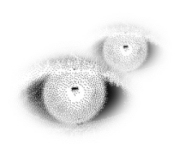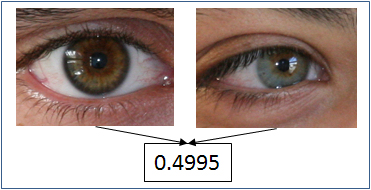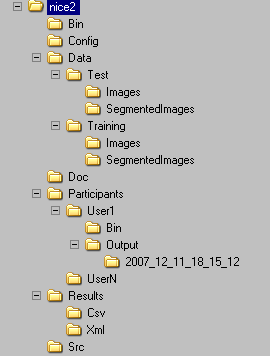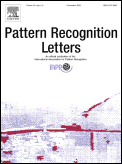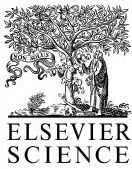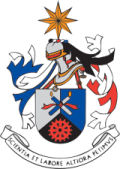|
Departamento
de Informática da Universidade da Beira Interior |
|
SOCIA Lab. – Soft Computing and
Image Analysis Group Department of Computer Science, University of Beira
Interior, 6201-001 Covilhã, Portugal |
NICE:II Frequently Asked Questions 1.
What is the NICE:II contest? The
NICE:II contest is an iris recognition contest that will evaluate the
following task: to compare and compute the dissimilarity between segmented
noisy iris images for biometric purposes. 2.
What is the main goal of the
NICE:II contest? The
NICE:II main goal is to evaluate the robustness to noise of iris encoding and
matching methods, toward iris recognition systems that operate in less
constrained imaging conditions, eventually covertly. 3.
What distinguishes the NICE:II from
other similar contests? There
are two main factors that distinguish the NICE:II contest from others: ·
Other
similar biometric contests (e.g., Iris Challenge Evaluation and Fingerprint
Verification Competition) evaluate the complete recognition process, from the
raw data preprocessing to the final identity decision. Oppositely, the
NICE:II contest is focused on the encoding and matching stages. Thus,
segmentation errors will not corrupt the final results, which enables a fair
comparison between encoding and matching proposals. ·
The
NICE:II contest operates on the highly noisy data of the UBIRIS.v2 database.
This database has one fundamental characteristic that distinguishes it from
the remaining ones: here the noise factors, rather than avoided, are induced.
This enables the effective evaluation of the algorithms robustness. 4.
Who can participate in the NICE:II
contest? The
NICE:II contest is open to individuals and institutions, either with
academic, industrial, research or commercial purposes. Participations are
allowed from any country of the world. Also, it is completely free of any
monetary charge. 5.
When and where will the NICE:II
contest take place? The
NICE:II is organized by the SOCIA Lab (Soft Computing and Image Analysis
Group) and it will take place between October 2009 (start of the application
forms reception period) and October 2010 (publication of the results). The
evaluation of the contest participations will take place at the SOCIA Lab,
Department of Computer Science, University of Beira Interior, Covilhã,
Portugal. Obviously, as the participations are submitted through the web, it
is not required the physical presence of any contest participant. 6.
What are the main advantages for
the NICE:II participants? Apart
of evaluate the robustness of the iris encoding and matching methods on
highly noisy data, such as the contained by the second version of the UBIRIS
database (UBIRIS.v2), the NICE:II best participants will have the opportunity
to publish their algorithms in a high reputable ISI-indexed International
Journal, such as the Pattern
Recognition Letters Journal. Also,
the remaining participants will have the opportunity to publish their
algorithms in the NICE:II contest proceedings (electronically, with ISBN).
Finally, participants will receive a Java-based evaluation framework
(binaries and source code), which will be used both in the development and in
the evaluation stage to conclude about the algorithms’ accuracy. 7.
Is the publication of the results
obligatory? Although
the NICE:II participations can’t be anonymous, it’s up to the participants to
decide whether they want to publish their algorithms, either in the Pattern
Recognition Letters Journal, in the NICE:II proceedings or nowhere. 8.
What kinds of executables are
accepted? The
NICE:II organizing committee has decided to accept standalone executables
that must execute in one of the following operating systems (Microsoft
Windows XP, with Service Pack 2 or Fedora Core 6). Moreover, the main
executable must be able to be called from the command line and receive two
arguments: the input and output data paths. Also,
MATLAB functions are accepted too: the main function should be called from
the MATLAB command-line and have similar requirements to the standalone
application. 9.
What libraries will be provided by
the NICE:II organizing committee? No
libraries will be provided and previously installed on the NICE:II evaluation
systems. All libraries that an executable requires will have to be provided
and placed within the respective “lib” folder, or incorporated into the
executable. 10. What
is the expected installation procedure? All
the participations are submitted through the NICE:II email, in a compacted
file. Further, there are two options: ·
The
submittal is installed via direct copy to the correspondent participation
folder. In this case, it should not be required any configuration steps. ·
If
some configuration step is required, the submittal must include an
installation program that performs all the file extractions and
configurations. 11. What
types of noise factors the second version of the UBIRIS database contains? The
aim of the second version of the UBIRIS database (UBIRIS.v2) is to realistically simulate less constrained image
capturing conditions, either at-a-distance, on-the-move or with minimal users
cooperation. When compared to its predecessor, this database contains more
images and with more realistic noise factors, namely: 1. Poor focused iris images. 2. Off-angle iris images. 3. Rotated iris images. 4. Motion blurred iris images. 5. Iris obstructions due to eyelashes. 6. Iris obstructions due to eyelids. 7. Iris obstructions due to glasses. 8. Iris obstructions due to contact
lenses. 9. Iris with specular reflections. 10. Iris with lighting reflections. 11. Partial captured iris images. 12. Out-of-iris images. 12. From
where application executables read the input data? And where write the output
data to? The
submitted application executables should receive as input 5 parameters: the
path of two iris images and of the corresponding binary maps that give the
iris segmentation. The last parameter is the path where to write the text
file containing the dissimilarity measure. For instance: >
User1 i1.tiff i1.bmp i2.tiff i2.bmp
i1_i2.txt The
above command will execute the application “User1”. The program should read
the images “i1.tiff”, “i2.tiff”, “i1.bmp”, “i2.bmp” and write the output text
file name “i1_i2.txt”. This file should contain exclusively a numeric
dissimilarity value between the iris images. Also,
please see the answer to question 14, which details the entire folder
structure of the NICE:II contest framework. 13. How
should, exactly, the dissimilarity value be produced? Essentially,
the submitted NICE:II participations should distinguish between the
intra-class and the inter-class comparisons. The
dissimilarity value should be a metric that clearly distinguishes between
intra-class comparisons (different images of the same iris) and inter-class
comparisons (images of irises captured from different eyes). In
the following, two examples of the desired dissimilarity value will be given.
In the first example, two iris images from the same subject give a low
dissimilarity value. The second example compares two irises from different
subjects, which should give a high dissimilarity value.
Figure
1: Intra-Class comparison, low dissimilarity
value
Figure
2: Inter-Class comparison, high
dissimilarity value 14. What
is the folder structure of the NICE:II Java evaluation framework?
Figure
3: Folder structure of the NICE:II
contest evaluation framework. The
above figure illustrates the hierarchical directory structure of the NICE:II
contest evaluation framework. The description of each folder’s purpose is as
follows: ·
NICE:II: main folder. This folder can be
installed in any hard drive location. Thus, the participants’ executables should always use relative
paths. ·
NICE:II/Bin: binary files required to run the
evaluation framework. ·
NICE:II/Config: configuration files required by
the above mentioned binaries. ·
NICE:II/Data: main data directory. ·
NICE:II/Data/Training: data files received at the start
of the NICE:II contest. These will be used by the participants to develop
their methods. Iris images of the training set and corresponding binary
images in “.bmp” format that give the segmentation of the iris. All the iris
images have the same dimensions, resolution, bit depth and format (“.tiff”).
The binary segmentation maps have the same name and “bmp” extension. ·
NICE:II/Data/Test: data files delivered to NICE:II
participants after the deadline for the applications executables. ·
NICE:II/Doc: Help and manual files. ·
NICE:II/Participants: main folder of the contest
participants. Each valid NICE:II participation will have a sub-folder
correspondent to the given username. ·
NICE:II/Participants/User1: folder of the NICE:II participation
with username equal to “User1”. ·
NICE:II/Participants/User1/Bin: application executables of the
“User1” NICE:II participation. Also, libraries needed by the executables
should be installed into this folder. ·
NICE:II/Participants/User1/Output: this folder contains the output
images correspondent to all the executions of the “User1” application. This
can be useful in the algorithms development stage. ·
NICE:II/Participants/User1/Output/2007_12_11_18_15_12:
folder that contains the output
images of the “User1” application executable, which was run in December 11th,
2007 at 18:15:12. ·
NICE:II/Participants/UserN: folder of the NICE:II participation
with username equal to “UserN”. ·
NICE:II/Results: main folder of the contest results.
It contains the results of all the NICE:II participations and executions in
two different formats: XML and CSV files. ·
NICE:II/Results/Csv: folder that contains the contest
results in comma separated file format. The description of all the fields is
given in the “NICE:II/Doc” folder. ·
NICE:II/Results/Xml: folder that contains the contest
results in eXtensible Markup Language file format. The used DTD can be found
[here]. ·
NICE:II/Src: source files of the NICE:II contest
framework. These are given essentially to enable further optimization /
customization by the contest participants. 15. What
are the folder permissions for a submitted executable? Associated
with any NICE:II participation it will be created a correspondent user by the
evaluation framework. This user will have read / write permissions in the
correspondent participation folder (for instance, NICE:II/Participants/User1 in the above example) and read permissions in the data
input folders (NICE:II/Data/Training/Images
and NICE:II/Data/Test/Images). 16. I
still have some doubt that is not answered in his FAQ. What should I do? You
should contact the NICE:II organizing committee, through the following email
address: nice2@di.ubi.pt. |
|
|
fghfghfghfgh
DI-UBI
Bloco VI Rua Marquês de Ávila e Bolama P-
6201-001 Covilhã PORTUGAL
